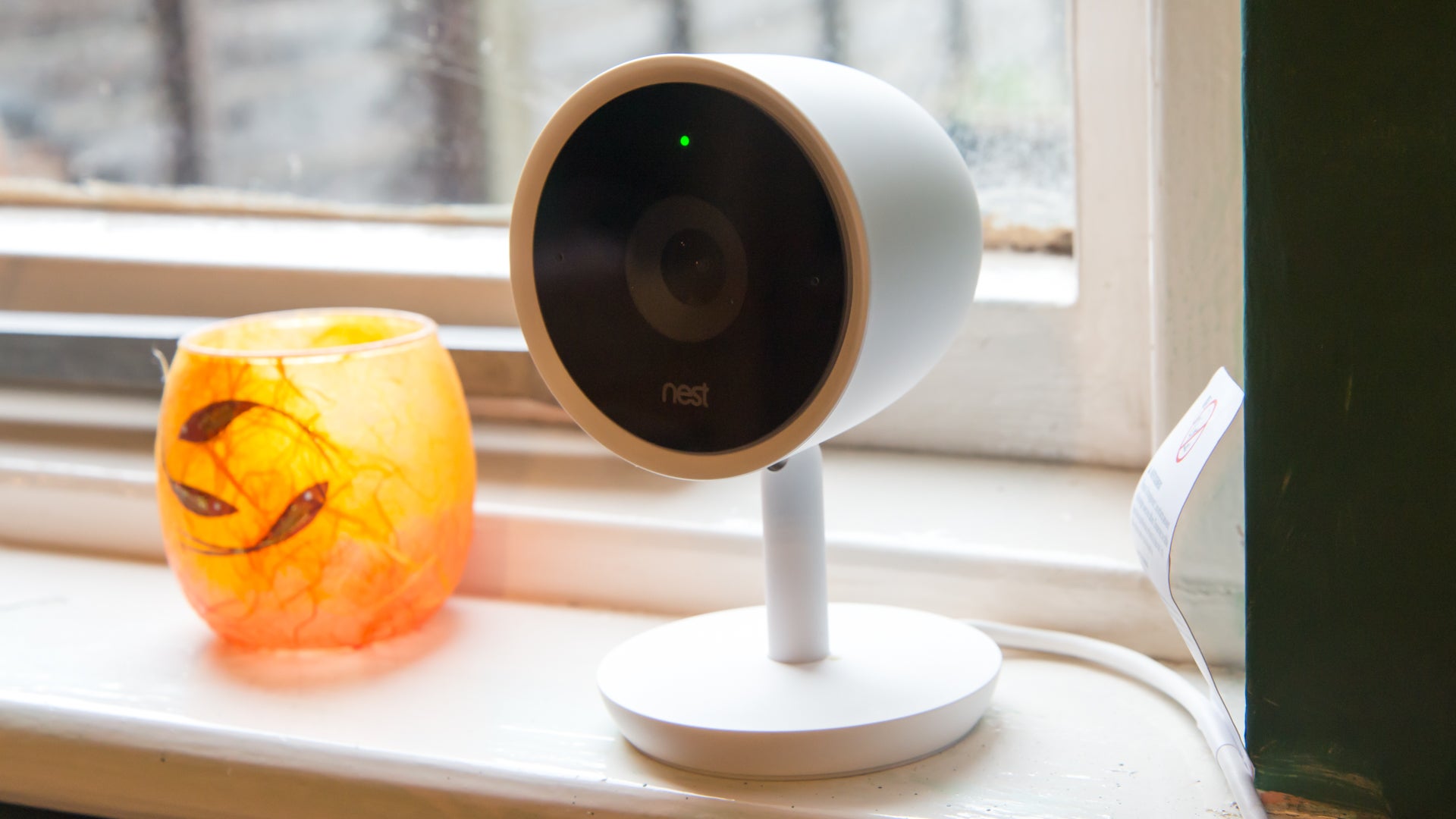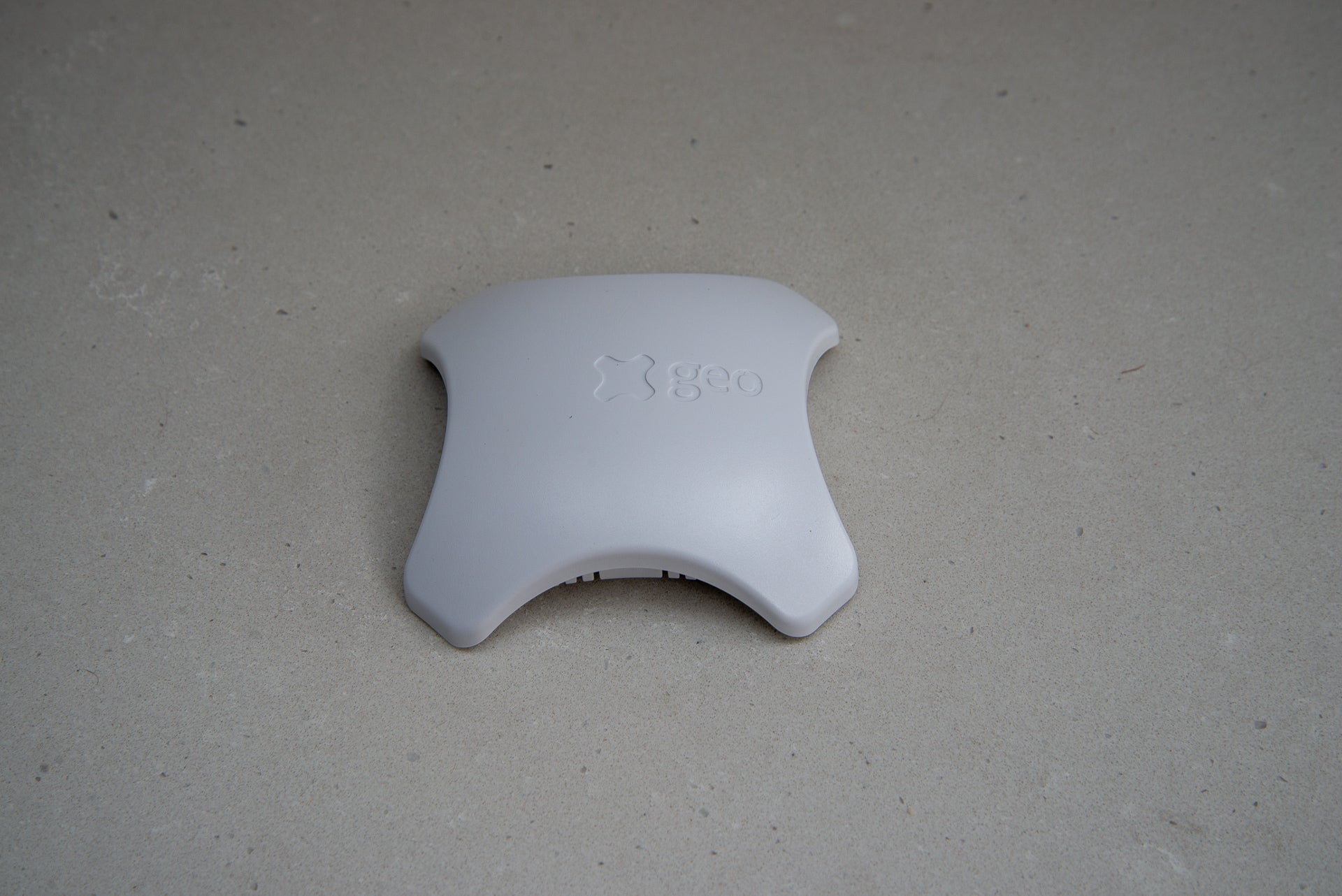Hero Labs Sonic Review
Find and detect any leak in your home
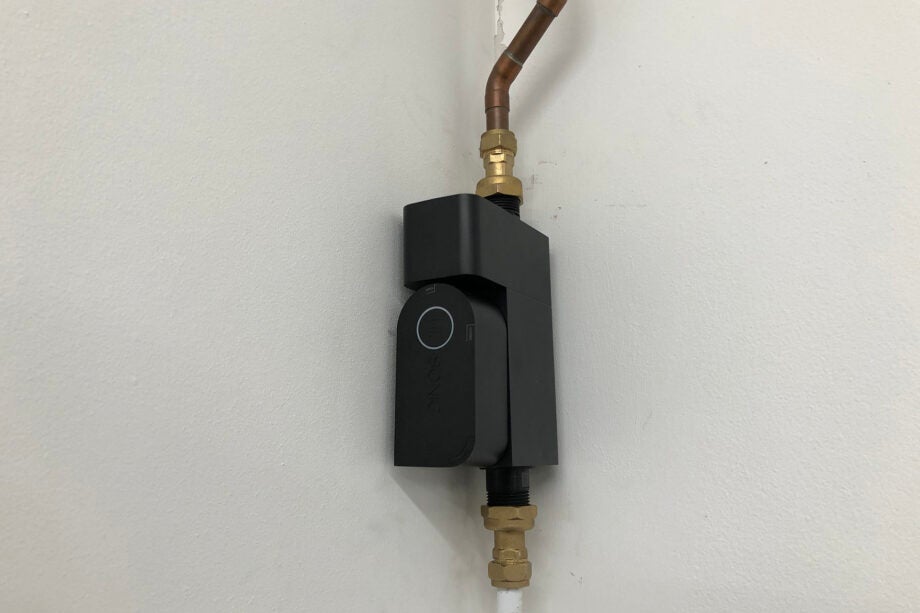

Verdict
Via a single sensor fitted to your water’s inlet, the Hero Labs Sonic can detect any leak on your system and shut off your water automatically to prevent further damage. This goes beyond systems that use water leak sensors, since they can only detect standing water where you’ve placed sensors. If you want to monitor your water and protect against damage, Sonic is the best system I’ve tested.
Pros
- Detects leaks anywhere in your system
- Pressure tests for pin-hole leaks
- Can automatically shut off power supply
Cons
- Not as fast to respond as traditional water leak sensors
Availability
- UKRRP: £1000
Available from OneAV
Key Features
- Water leak detectionUsing pressure testing and ultrasonic technology, this sensor can detect both large and pin-hole leaks alike
Introduction
Water leaks are the biggest cause of home insurance payouts in the UK, causing a significant amount of damage to homes and property. Hero Labs Sonic aims to reduce the damage of water leaks, by offering auto detection and on finding a leak shutting down your water system.
It’s exceptionally clever, even able to pick up pin-hole leaks, while acting fast to warn you about problems and cut your water off before the issue becomes serious. It would be nice to have the option to add dedicated sensors around the house in addition to the main inlet sensor.
Design and Features
- Needs a plumber to fit
- Detects water usage in real-time
- Pressure test finds smaller problems in your pipework
Traditionally, smarter systems such as the Honeywell Lyric W1 have used water leak sensors. These are placed around your home in places you’re most likely to suffer a leak, such as under a sink or washing machine, issuing a warning when water is detected. Most systems only go so far; they can’t turn off the water when this happens – although this is possible with the Geo Waterlock system.
Sonic is different. This system uses a water monitor that sits on your main inlet pipe. Using ultrasonic technology, this sensor can detect water flow through your system, warn you about cold temperatures that could indicate you’re in danger of a frozen pipe, and even pressure test the system to find pin-hole leaks.
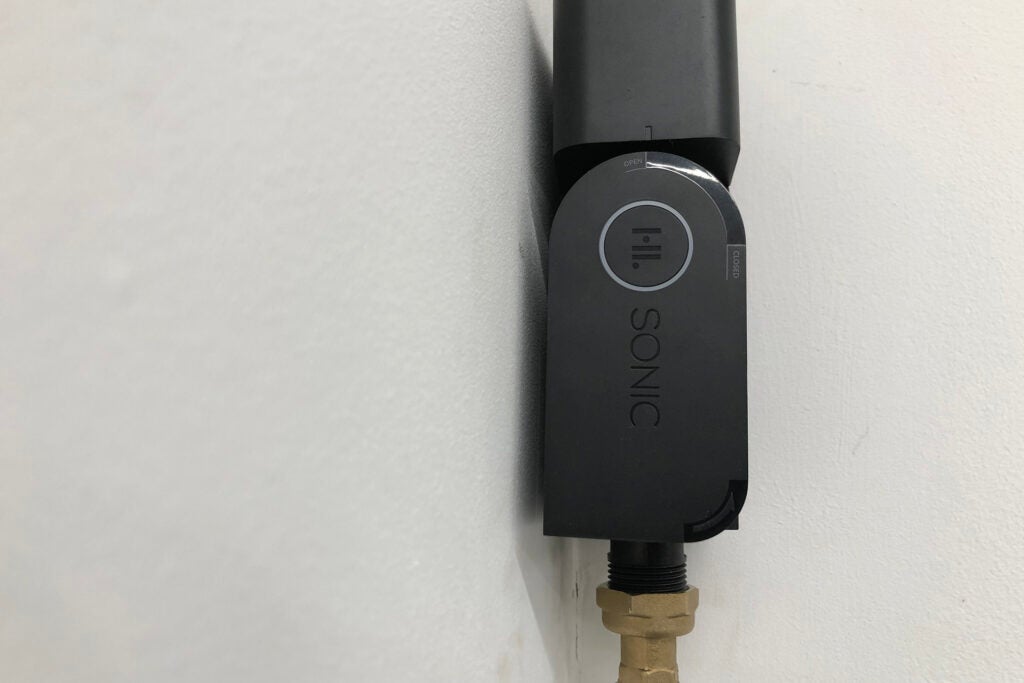
While you’ll need a plumber to fit this sensor, the actual job is very easy: my plumber had fitted the Sonic system inside 10 minutes.
Sonic can be powered via the mains with battery backup, or via battery alone, with a stated battery life of two years.
As well as monitoring your water, Sonic includes a motorised valve that turns water on and off, although you can manually turn the handle to shut off your water supply (or turn it back on).
To communicate with the outside world, you get the Hero Signal. A small plug-in bridge, this communicates with your Sonic and then your network using Wi-Fi. It’s very easy to get working, and I had mine up and configured in under 10 minutes.
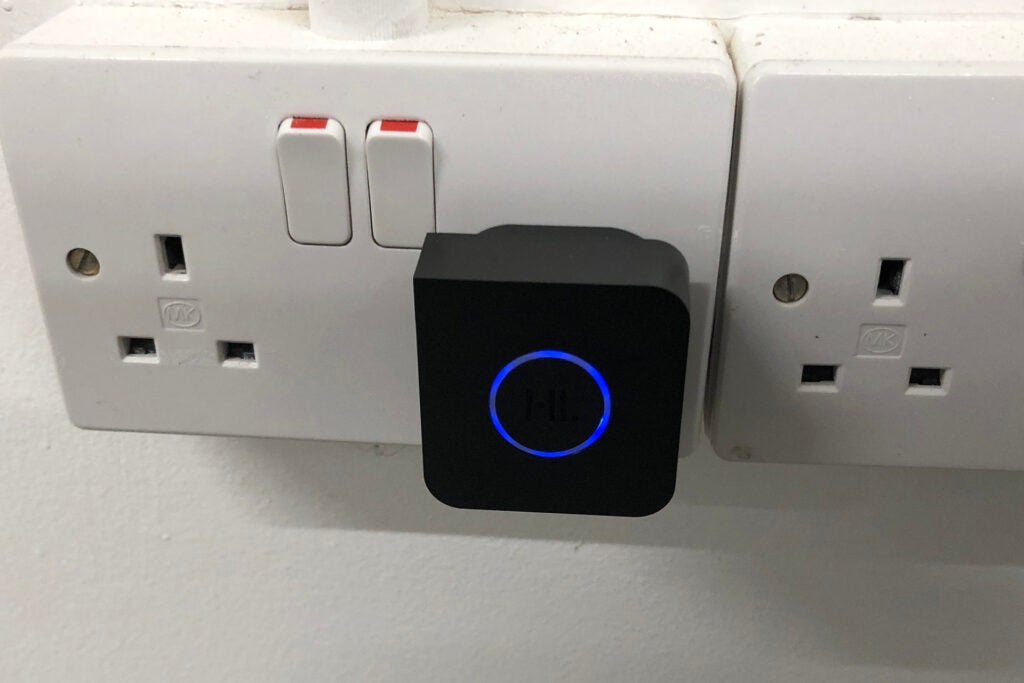
Once installed, the app asks you to state which devices you have installed in your home; it uses this information to try to work out how much water each uses. It’s hard to judge how successful this is, as my test lab has a constantly revolving selection of washing machines and dishwashers.
When you run water, the app tells you how much is being used. It will also show you water temperature and pressure. Water use stats are saved, so you can go back and check how much water you’re using.
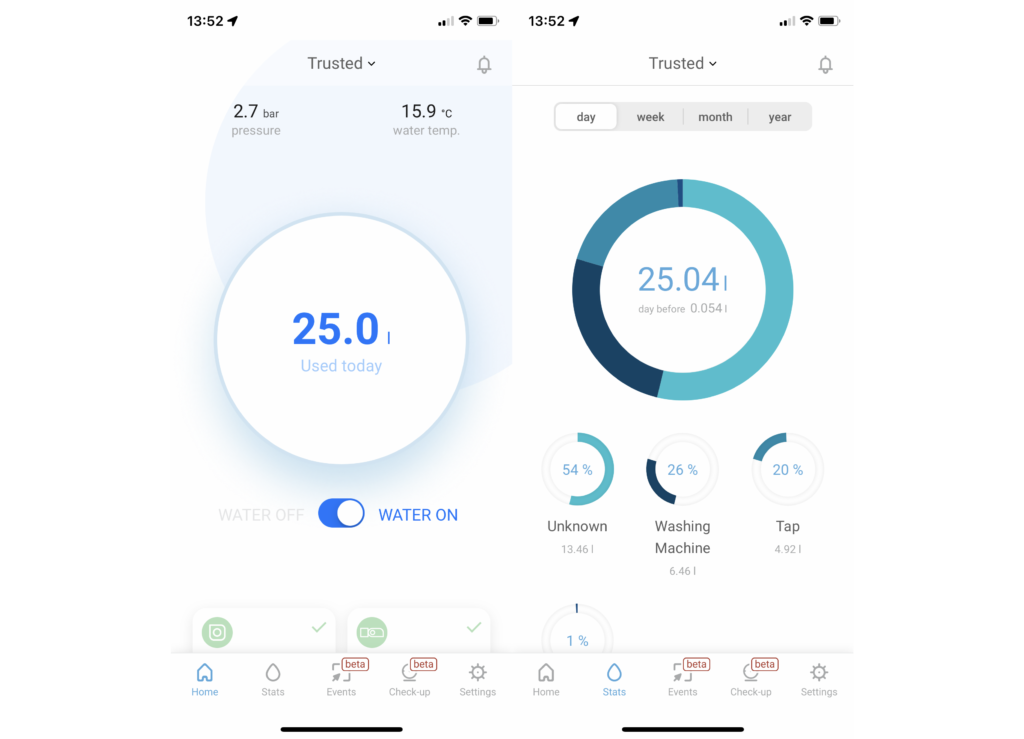
Water leak detection is based on two things. First, there’s abnormal use, which is set by default to 300 litres of water in one go, or water running for one hour. You can override these, pushing the water limit down to 25 litres. I don’t recommend going low, since 25 litres doesn’t even cover a single washing machine cycle.
Second, there’s the Check-Up feature, which pressure tests your system. If there’s a failure here, you’ve likely got a leak somewhere in your system – most likely something small enough that you wouldn’t normally notice.
This requires Sonic to turn off the water supply and monitor your home’s internal pressure. Check-Up is set to run every day at 3am when water is unlikely to be used, but you can run the test manually.
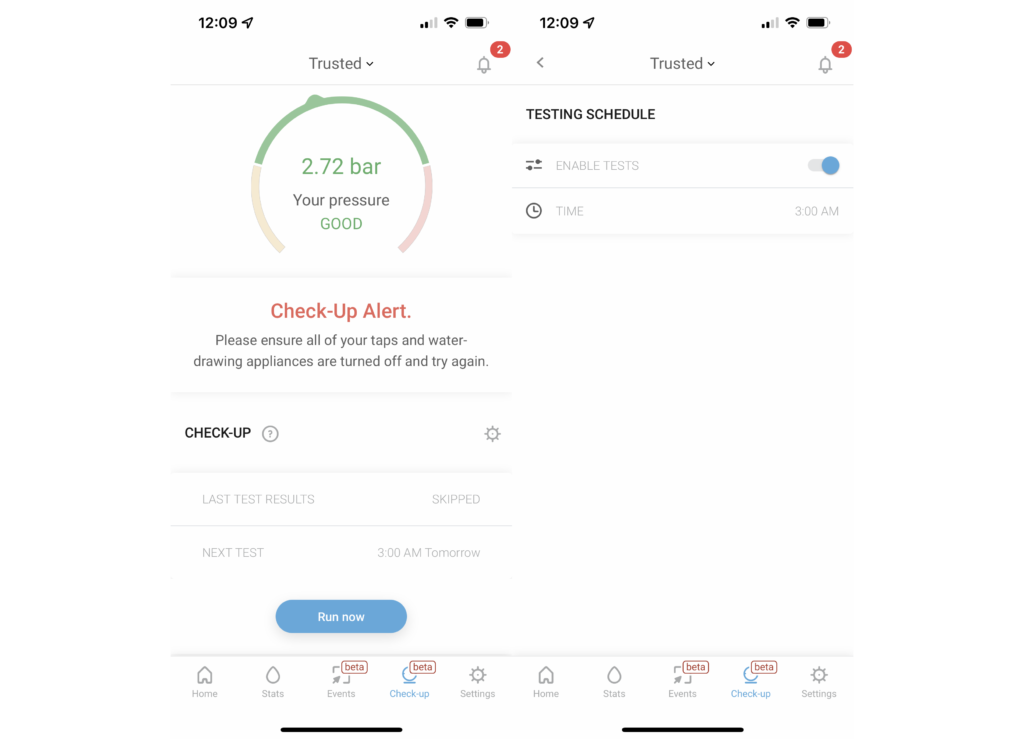
Performance
- Takes a little while to shut down water
- Pressure test is very sensitive
I tested by running a tap to dispense more water than the minimum level set. For testing purposes and to save water, I used the minimum value of 25 litres. Once this had been hit, I received a notification in the app that there was abnormal water use. At this point, the system doesn’t shut down automatically, but you can manually turn off your water supply if you’re worried.
Next, an incoming automated phone call warns you that there’s abnormal water use in your home, and you should check the app. If you still do nothing, then the system automatically turns off the water.
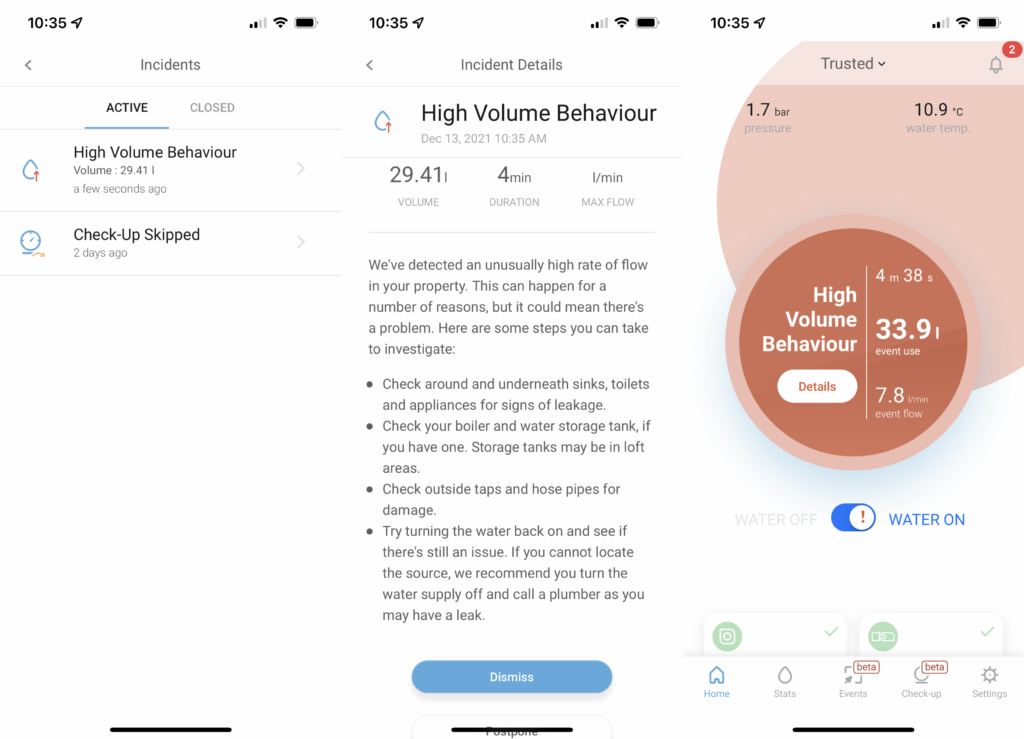
It’s important to note that the water usage limit has to be in one go. I left a dripping tap on all day, but this registered as intermittent events throughout the day, not one single event. As a result, I wasn’t automatically warned.
However, the pressure test would pick up on this, and the usage stats in the app showed me that water was being used.
Depending on the leak type and the settings you have, you could have – based on my testing – 350 litres or more of water leaking out before the Sonic shuts down. That sounds like a lot, but it’s a good deal less water than without the system: a burst pipe can output around 500 litres per hour, and will keep going until you’ve shut down the water.
Where Sonic has an advantage over water leak sensors is that it picks up water leaks no matter where they occur, even if a pipe under your floorboards is leaking or has burst.
That said, I’d like to see optional water sensors for Sonic, so that I could place them under items that are more likely to leak: the dishwasher, washing machine and boiler, for example. That way, if one of these appliances suffers a leak, the water would be shut off immediately, while the main Sonic detection system would pick up leaks anywhere else.
I also evaluated the pressure test. This ran every night and showed a 0% drop in pressure in my system, which means no leaks. Trying to run the test with a dripping tap caused this test to fail. That’s quite incredible, since it means that Sonic will pick up everything from the smallest to the largest leaks.
Latest deals
Available from OneAV
Should you buy it?
If you want to find and protect against leaks anywhere in your home, then this is the best overall system I have tested.
If you want to know if there’s an issue with a particular appliance, such as a washing machine, you’ll need a system with a water leak sensor.
Final Thoughts
Hero Labs Sonic is built to automatically detect all types of leaks, from the largest down to pin-hole ones, all via a single easy-to-fit sensor. Not only does the system detect leaks, it will also warn you about them and shut down your water automatically, to prevent further damage.
The system is a little slower to shut down than when using a system with a water leak sensor, such as the Geo Waterlock system, but Sonic has the advantage in that it will pick up leaks anywhere in your system, not just where you’ve placed a sensor.
I’d like to see optional water leak sensors for faster response times in some areas, such as under a washing machine; but, on balance, having a system that can detect any leak at the expense of a little more water getting into your home is the better option. This makes Sonic the best water leak detection and prevention system I’ve tested.
How we test
Unlike other sites, we test every smart home product we review thoroughly over an extended period of time. We use industry standard tests to compare features properly. We’ll always tell you what we find. We never, ever, accept money to review a product.
Find out more about how we test in our ethics policy.
We test how each product integrates with other smart home systems including Amazon Alexa, Google Assistant, Apple HomeKit, IFTTT and Samsung SmartThings
We use each smart home product in a real world setting, integrating it into our home.
FAQs
It can detect abnormal water use, based either on the volume or time of an event, and it can pressure test your system.
Sonic shuts down your water supply, then monitors the pressure: a drop indicates that there’s a leak in your pipework.

